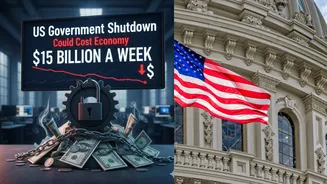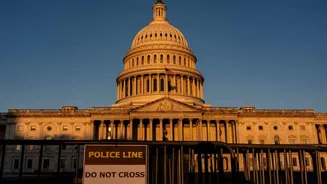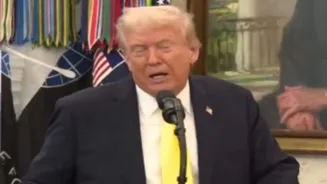The ongoing US federal government shutdown could cost the American economy as much as $15 billion per week, according to a Treasury official, a sharp correction
from Treasury Secretary Scott Bessent’s earlier remarks that placed the cost at up to $15 billion per day, said a Reuters report. The shutdown, now entering its third week, has begun to weigh heavily on government operations and private sector activity, threatening to derail the momentum of the post-pandemic economic expansion. Treasury Clarifies Economic Cost Speaking late Wednesday, a Treasury official said the updated cost estimate was based on an analysis by the White House Council of Economic Advisers (CEA). Earlier in the day, Secretary Bessent had cited a higher figure in two public appearances, including at a CNBC event on the sidelines of the International Monetary Fund (IMF) and World Bank annual meetings in Washington, D.C. “The shutdown is starting to cut into the muscle of the US economy,” Bessent said, urging Democrats to “be heroes” and cooperate with Republicans to reopen the government. Growth at Risk Amid “Trump-Led Boom” Despite the fiscal disruption, Bessent maintained that the US remains in the midst of a powerful investment boom, driven by incentives in the Republican tax law and President Donald Trump’s trade tariffs. “There is pent-up demand, but President Trump has unleashed this boom with his policies,” he said. “The only thing slowing us down here is this government shutdown.” Bessent compared the current surge in US industrial and technology investment to past transformative eras — including the late 1800s railroad expansion and the 1990s tech revolution — noting that the wave of capital flowing into artificial intelligence and manufacturing “is only getting started.” Deficit Shrinks, Says Treasury Chief Bessent also revealed that the US federal deficit for fiscal year 2025, which ended on September 30, was smaller than last year’s $1.833 trillion, although he did not disclose the precise figure. He said the deficit-to-GDP ratio could fall into the 3% range in the coming years, provided that economic growth accelerates and government spending is restrained. “The deficit-to-GDP, which is the important number, now has a five in front of it,” Bessent said. “If we can grow more, spend less, and constrain spending, we can bring it down further.” According to a recent Congressional Budget Office (CBO) estimate, the fiscal 2025 deficit slipped marginally to $1.817 trillion, despite a $118 billion surge in customs revenue stemming from Trump’s tariffs. Broader Economic Impact Economists warn that each week of the shutdown risks dampening GDP growth, disrupting federal services, and delaying payments to contractors and workers. With over 800,000 federal employees furloughed or working without pay, consumer sentiment could also take a hit heading into the holiday season. Bessent insisted the US economy remains fundamentally strong but conceded that the longer the political stalemate lasts, the greater the risk to investment and confidence. “We are still in a historic growth cycle,” he said. “But this shutdown is the one thing that could slow the momentum.”


















